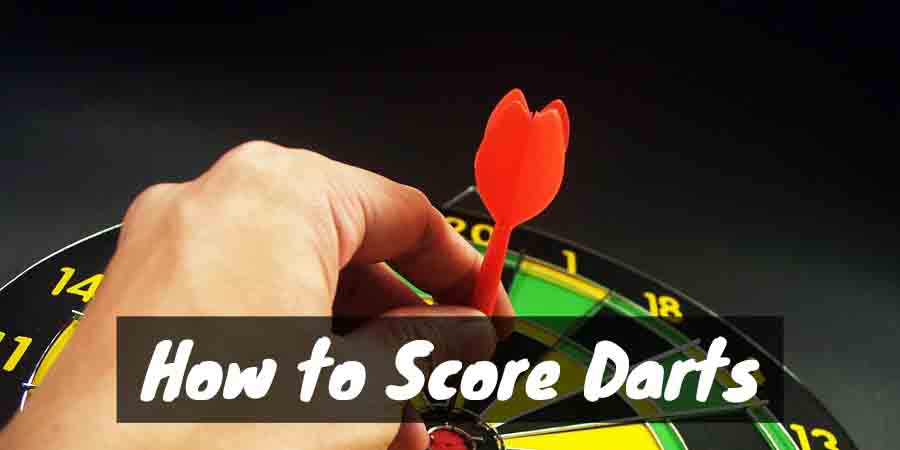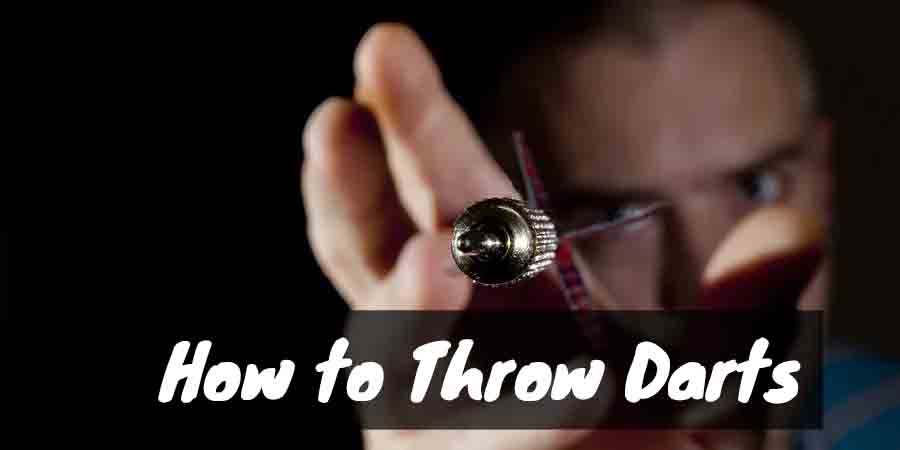Are you interested in playing darts? If you want to get into darts, but you’re not sure how the scoring works, then here’s everything you need to know about how to score darts.
Welcome to the thrilling world of darts, a game of precision, strategy, and skill. Whether you’re just starting or aspiring to level up your game, understanding how to accurately score darts is paramount.
As the core of the game, it’s not just about hitting the board; it’s about hitting the right sections and calculating the scores properly.
This guide aims to demystify the scoring process, walking you through the mechanics of tallying points in different game modes, comprehending the significance of the board’s areas, and mastering the art of counting hits.
Whether it’s the general scoring, understanding single, double, and triple scoring, or unlocking the secrets of the bullseye, we’ve got you covered.
1. General Scoring
The way in which points are tallied up is dependent upon what kind of game is being played. There are numerous different game modes. The most popularly played, and often the one used competitively, is called 501 or 301.
In general, however, points are scored when a dart hits the board. The dartboard is segmented into different sections. Each section has a number attached to it. That number is the number of points that you earn when your dart strikes it.
If your dart hits outside of the board, then you earn zero points. If you manage to strike the bullseye, then it is typically worth 50 points. However, it could be worth more or less depending on what dart game you’re playing.
2. Single, Double, Triple Scoring
Besides the number on the dartboard, the area in which the dart hits is also important for scoring. There are three main areas for you to strike on a dartboard. There’s the large surface of the board that’s considered the single ring.
When you strike a dart in the single ring, the number that is listed on the board is the exact number of points that you earn.
The double ring is the thin outer portion. Traditionally, this area is painted either red or green. When your dart strikes in that portion, then the number that is attributed to it is doubled. For example, if your dart hits in the thin outer portion and the number reads 10, you actually receive 20 points.
The last section is located in the thin inner portion that’s halfway to the middle. This is called the triple or treble section. When you throw a dart in that area, the number that is listed is tripled.
Knowing which area you should strike is important for the strategy behind darts. It may be worth it to try and improve your aim to hit as many numbers in the triple section as possible and then end with a few single area points.
For beginners, it may be worth it to just try and score points in a single area of the board while you hone your skills.
3. The Bullseye
Everyone knows that the bullseye is the place to hit in a dartboard to earn maximum points. What they might not realize, however, is that the bullseye is actually split into two different scoring regions.
The inner and outer rings of the bullseye are worth two different points. The outer ring of the bullseye is worth 25 points.
The inner circle of the ring is worth 50 points.
4. Counting Hits
Scoring in darts depends on recognizing whether a dart has gained any points. The lines that split each section of the dartboard, referred to as spiders, might be hit by your dart, leading it to bounce off. Due to this bounce-off, the dart wouldn’t secure any points.
Some pubs or games might allow you to keep the points, but competitively, striking the spiders doesn’t earn you points.
Whether you play on a traditional board or an electronic one can also determine how darts are scored. For a traditional board, if your dart hits the board but bounces off, then the points aren’t collected. This is because it’s impossible to tell where exactly the dart impacted.
On an electronic board, however, the points still count because the darts always bounce off of the board. The electronic board also records the place of impact, so it knows exactly where it touched and what points the dart earned.
In the event that a dart is held in place by two other darts, it is still counted as a point. This can occur when you throw two darts, and the third ends up striking but is obviously only held into place by one or both of the darts next to it.
As long as the dart doesn’t fall out, then it earns the number of points where the dart is touching on the board.
5. Adding, Multiplying, Subtracting
When playing any game of darts, you need to be able to add, multiply, and subtract in order to find out your score. When striking the single area, you just need to be able to add the numbers that your dart landed on together. For example, if you struck 5, 10, and 4, then your total would be 19.
Depending on what game mode you’re playing, you might then need to take that number and subtract it. If you’re playing 501, for instance, then you would subtract 19 from 501 at the beginning of the game. The remaining amount is your current score.
In the event that you hit a double or triple, then you need to be able to multiply the number by two or three. For instance, if you hit the 10-double mark, a single 2, and a nine-triple mark, then you would multiply the 10 by two and the 9 by three before adding them all together. So, your total would be 49.
In a game of 501, you’d subtract 49 for a total score of 452.
6. Scoring and Games
The examples given above are with the game modes of 501 or 301 in mind. However, other games may require you to score your darts differently. For example, if you want to play Cricket, then you need to score your darts according to the rules of Cricket.
This means that you first have to score a certain number of points on the board in order to even be able to have an actual score. For instance, you first have to score 40 with your darts. If you manage to score 48, for example, during your turn, then your final score is really only 8 points.
The final score is subtracted from the initial 40. This can be a confusing game mode for those who aren’t familiar with the game of Cricket.
In another game mode, Killer, the numbers on the dartboard are primarily used to help establish an order of who throws first, second, etc. This game mode is more reliant on your ability for precision and accuracy than actually adding or subtracting points across the board.
Essentially, understanding the areas of the board and which numbers you can double or triple are essential to winning most games. It’s important to remember that you subtract more than add.
How to Score Dart Games (Video)
Related Questions
1. What is the significance of the triple section in a game of darts?
The triple section, located halfway to the middle of the dartboard, is an important area in the game. If a dart lands in this area, the number listed there is tripled. This makes it a strategic spot to aim for, as it allows players to accumulate points quickly.
2. What happens when a dart hits a spider?
If a dart hits a spider, the lines that segment the dartboard, the dart usually bounces off. In such cases, the dart doesn’t score any points unless some pub or casual games decide to keep those points.
3. How are points counted if a dart hits the bullseye?
The bullseye of a dartboard is divided into two scoring regions. If a dart hits the outer ring of the bullseye, it scores 25 points. If it hits the inner circle of the bullseye, it scores 50 points.
4. What’s the significance of mathematical operations in darts scoring?
Understanding how to add, subtract, and multiply is crucial when scoring in darts. For instance, in the 501 game, you subtract the points you score from 501. Also, if you land on the double or triple areas, you multiply the number by two or three, respectively.
5. How does scoring in the game of Cricket differ from other modes?
In the Cricket game mode, you first need to score a certain number of points to have an actual score. For example, you might first have to score 40 points. If you score 48 during your turn, your final score is only 8 points, as the final score is subtracted from the initial 40.




